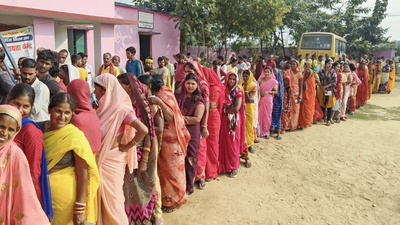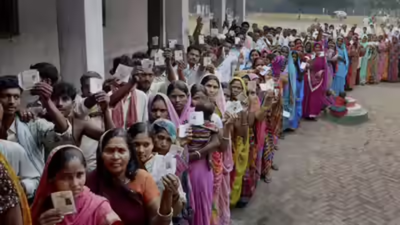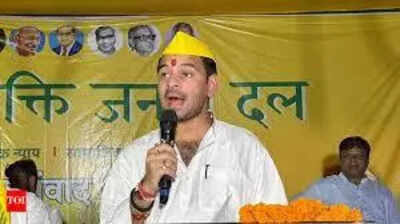BJP, Congress, and JSP in neck-and-neck fight for Lakhisarai seat | India News

NEW DELHI: Candidates from the Bharatiya Janata Party (BJP), the Indian National Congress (INC), and the Jan Suraaj Party (JSP) are locked in a close contest in Bihar’s Lakhisarai Assembly constituency, one of the most closely watched seats in the state’s ongoing Assembly elections. As polling took place on November 11, 2025, in the second phase of the Bihar elections, early trends from ground reports suggest a tight three-way battle, with sitting MLA Vijay Kumar Sinha (BJP) facing strong challenges from Amaresh Kumar (INC) and Suraj Kumar Malviya (JSP).
| Candidate Name | Party | Votes | Status |
|---|---|---|---|
| Vijay Kumar Sinha | BJP | [To be updated] | [To be updated] |
| Amaresh Kumar | INC | [To be updated] | [To be updated] |
| Suraj Kumar Malviya | JSP | [To be updated] | [To be updated] |
Voting detailsLakhisarai recorded a voter turnout of 77.64%, a notable increase compared to its 2020 turnout of around 55%, signaling heightened public engagement this election. Across Bihar, the overall turnout stood at 66.91%, setting a new record for participation in state polls.Constituency at a glanceThe Lakhisarai Assembly constituency, situated in Lakhisarai district, is part of the Munger Lok Sabha seat. Classified under the General category, it has long been a political battleground known for its competitive margins and shifting alliances.In the 2020 elections, Vijay Kumar Sinha (BJP) secured a second consecutive win, polling 74,212 votes (38.2%), and defeating Amaresh Kumar (INC), who managed 63,729 votes (32.8%) — a margin of 10,483 votes. Independent candidates Sujeet Kumar (11,570) and Fulena Singh (10,938) also made a modest impact on the outcome, drawing votes away from the main contenders.Going further back, in 2015, Sinha had clinched victory with 75,901 votes (40.8%), defeating Ramanand Mandal of JD(U), who received 69,345 votes (37.3%), winning by a margin of 6,556 votes. The constituency’s history reflects tight margins and strong bipolar contests, often swinging with the state’s broader political mood.






